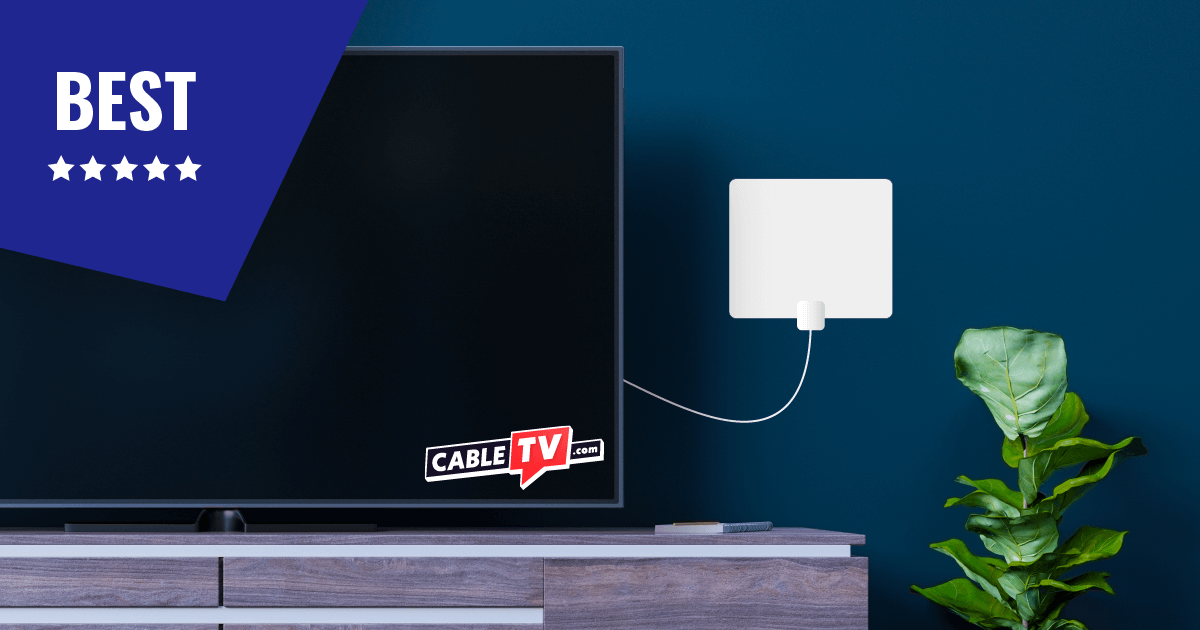Hiding TV wires is easy
Your new flat screen TV is finally mounted, and you’re ready to start watching your favorite movies. But what are you going to do about the ugly wires that are dangling from your TV set like a bunch jellyfish tentacles?
Don’t worry—we’ve got how-tos here for hiding the wires around any kind of TV setup. But first, you need to choose which cord management solution works best for you:
- Hiding wires inside the wall looks cleaner, but it’s also more expensive. If you have a mounted TV setup that you don’t plan on changing for the next several years, then hiding the wires inside the wall is a great investment.
- If you have a more temporary mounted TV setup or if you’re on a budget, we recommend hiding your TV wires outside of the wall.
- If you have an unmounted TV sitting on a cabinet, shelf, or any other surface, we have a couple of non-wall cord management ideas for you.
How to hide TV wires inside the wall
Things you’ll need to hide wires in the wall:
- Cable management DIY kit
- Stud finder
- Pencil
- Sheetrock saw, drywall saw, or drill
- Screwdriver (Phillips or flathead depending on what kit you purchase)
Helpful optional tools:
Step 1: Choose your kit.
Your HDMI cord, audio cables, and other low-voltage cords are okay to go through the wall, but running the main TV power cord through your wall isn’t code compliant. That’s why you’ll need a DIY kit.
Some DIY wire-hiding wall kits will give you a code-compliant cord to connect to so you don’t have to connect any of the conductors yourself.
Other kits will give you a code-compliant tube that your TV’s power cord is allowed to run through. These first two are the easiest kits for beginners.
The third type of kit provides you with either an electrical wire or Romex cable and instructions on how to connect the conductors to the new outlet yourself. This will have to be done at the top and bottom outlets. If you’re an experienced DIY pro, this is the kind of kit you’ll like. The first two types are best for most people.
Step 2: Buy your kit.
Most DIY kits for this job range between $40 to $100. You can get a DIY kit on Amazon. We like the Echogear model because it’s cheap and doesn’t require you to connect any conductors.
Step 3: Plan your wire route.
Choose a spot on the wall as close to your wall mount TV bracket as possible. This will be the top hole—where your wires go into the wall.
The bottom hole, where your wires will come out of the wall, will need to be directly below the top hole and directly right or left of a nearby outlet. Use a stud finder to find a clear, vertical path between two such spots.
Step 4: Trace your wall ports according to the template.
There should be a paper template included in your kit.
Trace around each template with a pencil, and remember that the two holes you’re drawing will need to be vertically in line with each other. Use a level for best results.
The hole that you cut according to the template will be perfectly sized for the outlet cover/workboxes. These are the ports that will allow your wires to go in and out of the wall.
Step 5: Cut out the wall holes.
If a hole-saw drill attachment isn’t included, use a sheetrock saw or drywall saw to neatly cut out the shapes you have traced on your wall. Once you’re done, pull the leftover pieces of drywall out and discard them.
Step 6: Feed the main cord through the top hole and out the bottom hole.
Depending on which kit you pick, the main cord will be a provided power cord, Romex cable, electrical wire, or just a provided tube you can put your TV cord through.
If there’s a lot of insulation inside the wall, some fish tape may help you get cords from the top hole and out the bottom hole.
Step 7: Feed all your low-voltage cables and cords through the unattached top outlet cover (included in the kit), through the top hole, and down through the wall.
Leave enough of these cords hanging out of the top outlet cover to reach the TV ports. Pull the ends of these cords out of the bottom hole and through the unattached bottom outlet cover.
Step 8: Install the top outlet cover.
Bend the ears down on the outlet cover/workbox, insert the outlet cover/workbox into the wall, and secure the outlet cover/workbox to the wall with your screwdriver and the provided screws.
Step 9: Install the bottom outlet cover.
Once you’re sure all the ends of your low-voltage cords have been pulled through the bottom outlet cover, screw the bottom outlet cover into the wall just like the top outlet cover.
Step 10: Connect the bottom outlet cover to your destination outlet.
Using the provided extension cord, insert the female end into the recessed, bottom outlet cover and the other end into the destination outlet or surge protector.
From there, just connect all your low-voltage cords, like your HDMI and audio cords, to your entertainment devices.
How to hide wires outside the wall
Maybe your landlord would be a bit upset if you started cutting holes in the walls. Or maybe you’re just not comfortable with a drywall saw. Thankfully, you can hide TV cables outside of your wall either by turning them into wall art or installing a wire cover.
How to install a wire cover
Hiding wires on the wall with a paintable cord cover is the second-best option for mounted TVs. And fortunately, they’re easy enough to put in place.
Step 1: Measure.
You’ll want to check how long you need the cover to be and trim both the base and the cover to size.
Step 2: Mark the wall.
Use a pencil and a level to draw two, straight parallel lines between anchor points.
Step 3: Mount the base of the cord cover to the TV wall.
Line the base up vertically against the wall over the anchor points below your TV. Use a drill and screws to secure the base to the wall at the anchor points.
Step 4: Line up your TV cables.
Pull the cords together so they are lined up between the two vertical edges of the base of the cord cover.
Step 5: Snap the cover.
Make sure to lay the cover over the cords on the base. You should be able to hear it snap.
Step 6: Paint the over cover.
This will help it to blend in to the wall. Or you could paint it hot pink if you’re daring.
How to hide wires from an unmounted TV
If you’re working with a TV stand, cabinet, or another piece of furniture but still want your wires out of sight, this section is for you.
Your entertainment base probably has cords running out like ivy from your modem, Blu-ray player, speakers, and that VHS player you just can’t seem to throw out for nostalgia’s sake.
You can reduce tripping hazards, and even some fire hazards, by using our cord-hiding suggestions below.
Ideas on how to hide cords on a desk or cabinet
- Use adhesive cord clips to attach your wires to the back face and legs of your furniture.
- Use a cord consolidator. It won’t make your cords disappear, but they will be tidy.
- Mount your surge protector onto the wall just under the bottom of your desk or TV stand. Use a photocopy of the surge protector bottom to guide you in placing the screws, those divots on the back are actually there so you can mount your surge protector by screws set into the wall or another surface.
How to hide electrical cords on the floor
- Buy cord covers that will wrap around the trim at the bottom of your walls. Some models can even be hidden beneath the wall trim.
- Invest in flat wires that you can lay down along the wall corners or glue to the wall trim. Add a little paint, and you’ll be hiding cords in plain sight.
More creative ways to hide TV cords, cable boxes, and routers
Ditch the wicker basket and try these creative solutions:
- Create a cord sleeve for your cords from fabric and Velcro or yarn.
- Make a fake-book for your extra cords.
Hiding TV wires FAQ
What is a power bridge?
A power bridge is one of those DIY inside-the-wall kits that have the conductors connected for you.
Just feed the kit-provided power cord through the wall and connect it to the bottom wall port. The two matching power ends should click when you connect them. Then you are good to screw the bottom outlet cover to the wall.
Can I hire someone to install wires in my wall?
You certainly can. There are agencies that will allow you to hire someone to hide the TV wires in your wall. They can mount your TV too. We wish we could afford to hire them to help us out with our IKEA furniture assembly.





